When you step foot on Crete, it feels like stepping into a living museum—a place where history, culture, and artistry are woven into the fabric of everyday life. This is an island bursting with creativity, where ancient traditions meet modern craftsmanship.
From the rhythmic hum of a loom to the delicate carving of olive wood, artisans have spent centuries perfecting their crafts in Crete, each piece carrying the soul of the island. Today, we’ll explore nine remarkable local crafts that showcase Crete’s artistic heritage—treasures that reflect the island’s resilience, beauty, and timeless connection to its people.
Do not mistake these crafts for simple tourist souvenirs. They represent the living heartbeat of Cretan culture, with techniques dating back to the Minoan civilization that once dominated the Mediterranean. Whether you’re a longtime visitor who considers Crete your second home or someone dreaming of your first trip, these crafts will inspire you to dive deeper into the heart of Cretan culture and support the hands that keep its traditions alive.
1. Legacy of Minoan Pottery Making
Clay vessels tell stories of an ancient civilization that once dominated the Mediterranean. When you visit Crete today, you’ll discover that this 5,000-year-old pottery tradition is still alive and thriving, especially in places like Margarites village, where more than 15 workshops keep the ancient craft burning.
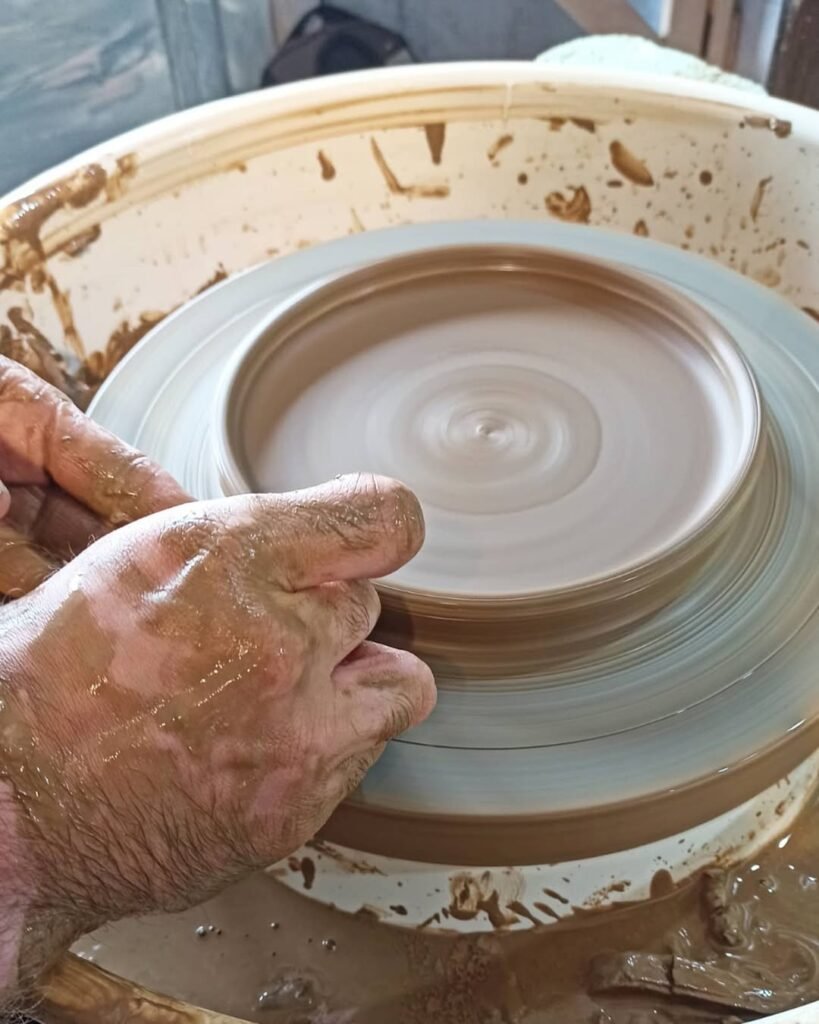
The Minoan craft evolved dramatically around 1900 BCE with the introduction of the potter’s wheel, allowing for thinner walls and more symmetrical shapes. The Marine Style from the Late Minoan period showcases octopuses, starfish, and coral that reveal their profound connection to the sea, while the bold colors and dynamic lines of Kamares ware reflect their joyous worldview.
Do not mistake these vessels for merely decorative items. Many carried deep religious significance, depicting bull’s heads or double axes tied to Minoan rituals. The massive pithoi (storage jars) found at Knossos weren’t just impressive—they were engineering marvels, partially buried for stability and capable of holding up to 80,000 liters of olive oil or grain.
Today in Margarites, local artisans continue using lepida, a special clay from nearby hills, just as their ancestors did.
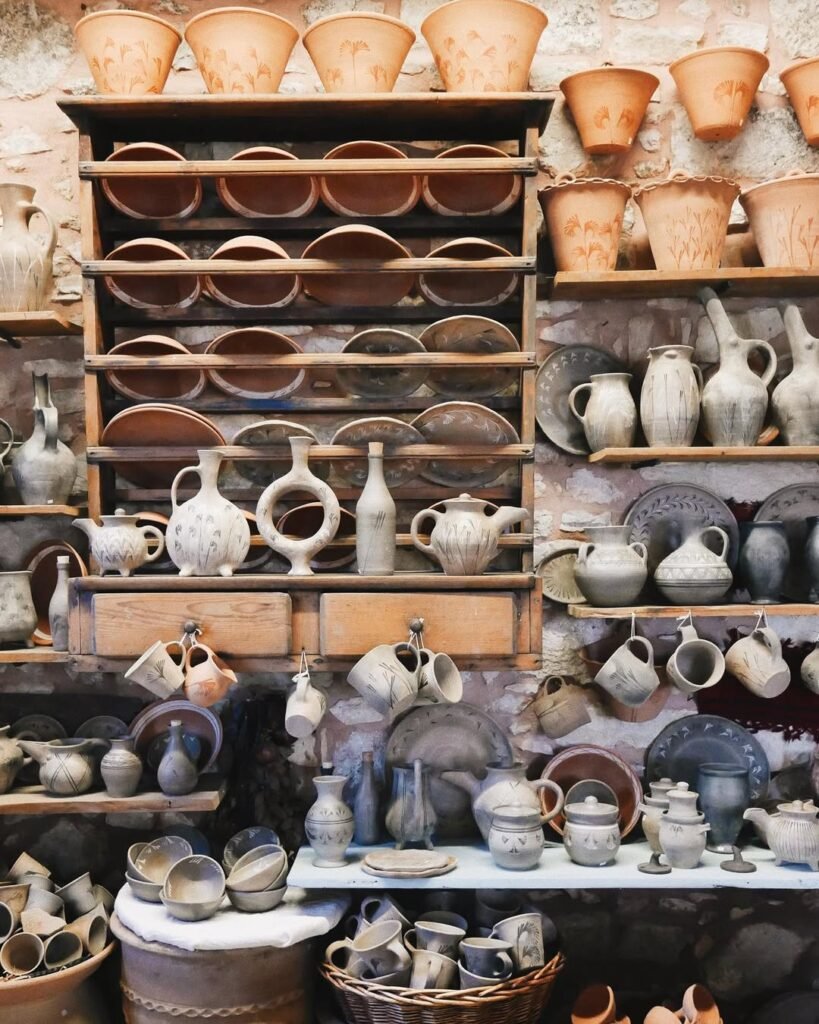
Where to Experience It:
- Heraklion Archaeological Museum: Marvel at the world’s most comprehensive collection of Minoan pottery, including famous Kamares ware and Marine Style masterpieces
- Thrapsano Village: Visit “The Village of Potters” with workshops like Minoan Pottery (Konstantinos Houlakis) and Ploumakis Nikos, where traditional techniques are preserved using wood-fired kilns
- Margarites Village: Explore multiple workshops offering demonstrations and hands-on pottery classes using techniques inspired by ancient traditions
- Historical Museum of Crete: See how pottery styles evolved throughout different periods of Cretan history
2. The Art of Traditional Cretan Weaving
Just as the Minoan potters shaped clay into stories, Cretan weavers have transformed simple threads into vibrant narratives for nearly 5,000 years. You’ll find this ancient craft alive in villages like Anogeia and Kritsa, where the hypnotic rhythm of wooden looms echoes through narrow streets.
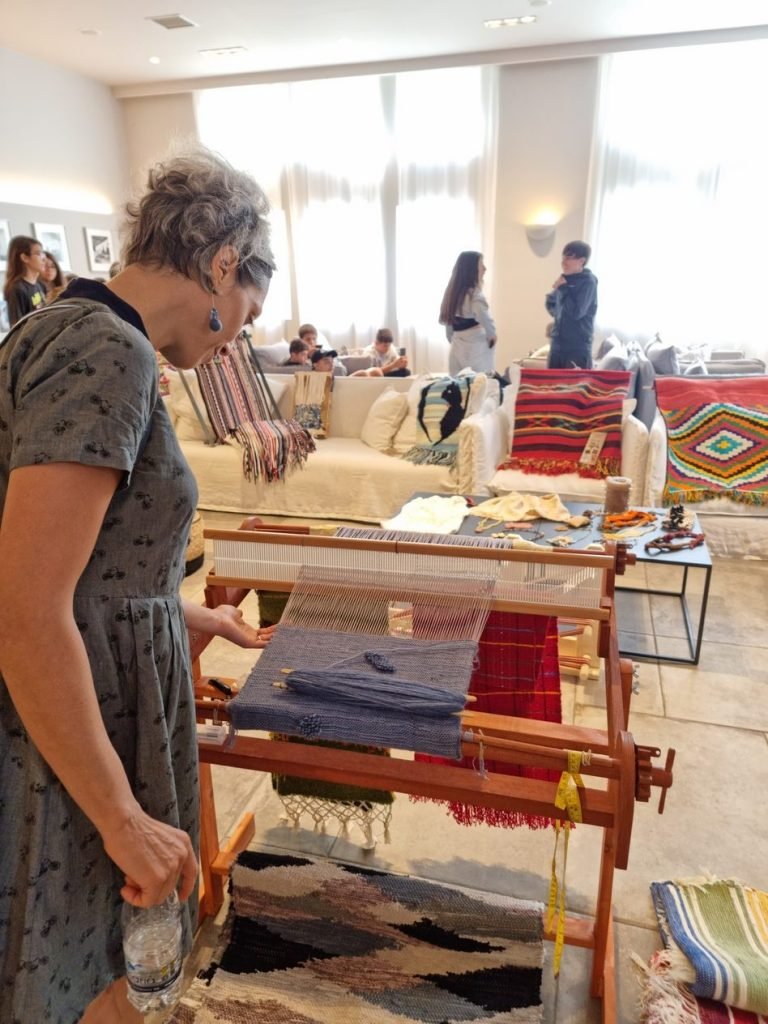
Weaving in Crete dates back to 2000 BCE, with Minoan frescoes depicting women at looms. Archaeological evidence reveals that the Minoans operated organized textile workshops, establishing Crete as a major center for textile trade in the Bronze Age.
Traditional weavers use wool from local sheep on Psiloritis Mountain, along with cotton, linen, and occasionally silk. These materials are transformed with natural dyes derived from seasonal plants—pomegranate skins for vibrant reds, olive leaves for subtle greens, and historically, precious saffron for yellows. The distinctive xobliasta and ploumista fabrics showcase their mastery.
Ancient motifs like spirals representing eternity and diamonds symbolizing protection aren’t just decorative—they connect to deep cultural beliefs. Similar patterns appear in the famous “Saffron Gatherers” fresco, showing how these symbolic designs spread throughout the Aegean.
In Cretan culture, weaving is a social institution that builds community bonds. Historically, women gathered around looms to share stories and wisdom while working together. This tradition continues in villages like Anogeia, where a recently opened weaving school teaches young women using traditional methods.

Where to Experience It:
- Rodakas Loom Weaving Workshop in Margarites: Take hands-on classes with skilled instructors like Despoina Pantelaki Somakou and learn authentic loom weaving techniques
- Anogeia Village: Visit multiple workshops where artisans create textiles with symbolic motifs inspired by ancient Cretan traditions
- Aretousa Workshop in Archanes: Discover this women-led cooperative that preserves traditional methods while creating modern items like laptop bags and tablecloths
- Kurelu Project at Monofatsiou Tower: See how traditional techniques are being integrated with contemporary designs
- Cretan Folk Art Center in Rethymno: Watch weavers at work in this “living museum” and take classes to learn traditional techniques
- Spili Village: Learn about natural dyeing techniques using local flora to create vibrant colors
3. Embroidery: Ancient Patterns and Stories
Ever wonder how ancient Cretans preserved their stories without putting pen to paper? They did it through the intricate art of embroidery, weaving tales and traditions into every stitch. Among all the crafts in Crete, embroidery perhaps best captures the island’s multicultural heritage, with techniques influenced by Byzantine, Venetian, and Ottoman traditions.

When you look closely at Cretan embroidery, you’ll notice meaningful symbols like spirals representing eternity and rosettes depicting nature’s beauty. These weren’t just decorative choices – they were a visual language expressed through techniques like kritiko kofto (cutwork) and kritiko plekto (lace-like patterns).
Embroidery was historically a communal activity where women gathered to exchange village news and share family recipes while creating precious dowry items (prika) for their daughters. These richly decorated tablecloths, bed linens, and curtains weren’t just household items but symbols of family pride and cultural identity.
In villages like Ierapetra, artisans use traditional techniques to create contemporary pieces like decorative pillows and clothing. Old embroidered fabrics are cleverly repurposed into wall hangings and accessories, preserving their cultural value while giving them new life. This revival has younger generations incorporating traditional motifs into modern items like tote bags, ensuring this ancient craft continues to evolve.
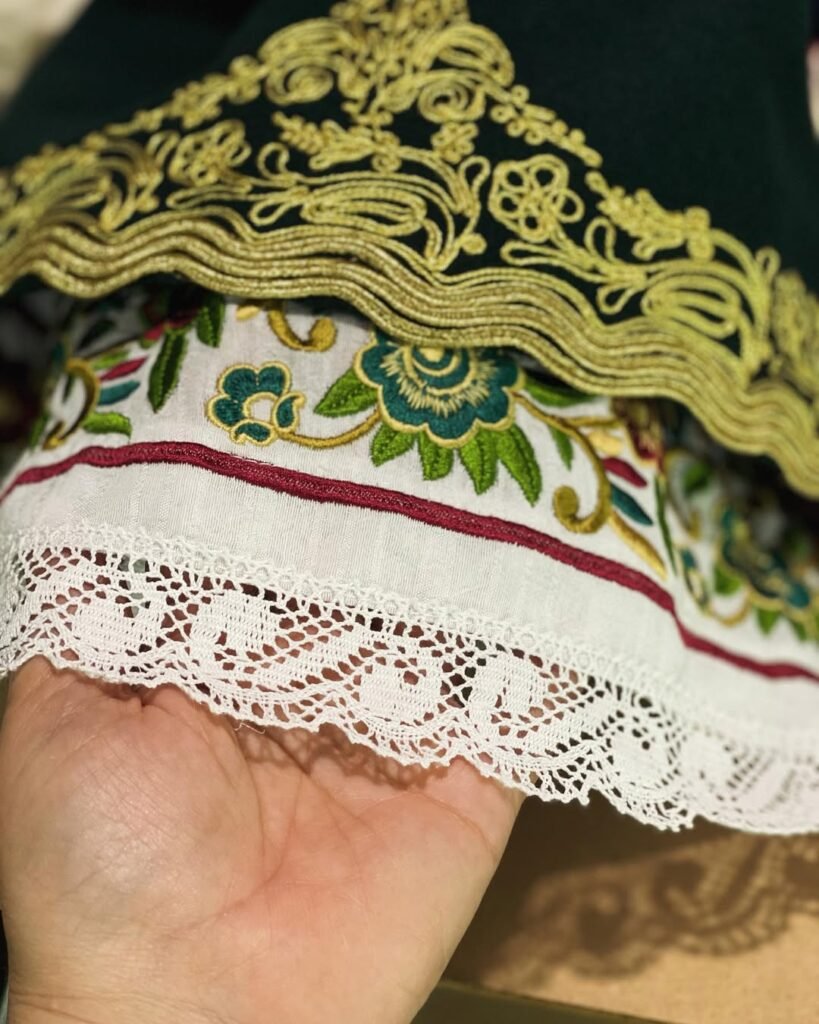
Where to Experience It:
- Cretan Folk Art Center in Rethymno: Visit this “living museum” to watch artisans practice embroidery and take classes to learn traditional techniques
- Folklore Museum of Chania – Cretan House: See embroidery paintings being created and explore exhibits of rural Cretan life from the 18th and 19th centuries
- Alexandra & Nektaria’s Greek Embroidery Weaving Workshop: Participate in an immersive experience combining traditional techniques with modern designs
- Ierapetra: Meet local artisans dedicated to preserving authentic Cretan embroidery traditions
- Mountain Villages (Anogia, Krousonas, Zaros): Explore workshops creating intricate patterns inspired by nature and Minoan motifs
- Weaving Festival in Archanes: Attend this celebration of Crete’s textile heritage featuring demonstrations and exhibitions of traditional costumes
4. Kopaneli Lace: A Delicate Heritage
Another intricate art form captures the island’s soul through delicate white lacework. You’ll find kopaneli lace, introduced to Crete by a nun from the Holy Monastery of Korakion in Akrotiri, still being crafted in villages like Gavalochori today.

This Renaissance-inspired craft has a fascinating history. The technique quickly spread throughout nearby villages, taking on a uniquely Cretan character while becoming not just an art form but a means of economic survival—women once used their lace pieces as currency for everything from school supplies to clothing.
If you visit Gavalochori, you’ll hear the rhythmic clicking of wooden bobbins (kopanelia) as artisans weave intricate patterns on special pillows called kousouni. What’s remarkable is that many experienced lace-makers create these complex designs without pre-drawn patterns, relying entirely on memory and improvisation. Traditionally made with local silk threads from mulberry-fed silkworms, today’s pieces may also incorporate cotton for different effects.
The Folklore Museum of Gavalochori showcases a seamless 1956 wedding dress made entirely of kopaneli—a demonstration of the patience and precision this delicate craft demands. The inscription on a plaque in the village perfectly captures its spirit: “You need hard work and patience to make bobbin lace, as always is required for fine arts.”
During summer months, the streets of Gavalochori come alive with women working outdoors on their kousounia, creating a picturesque scene that attracts visitors.
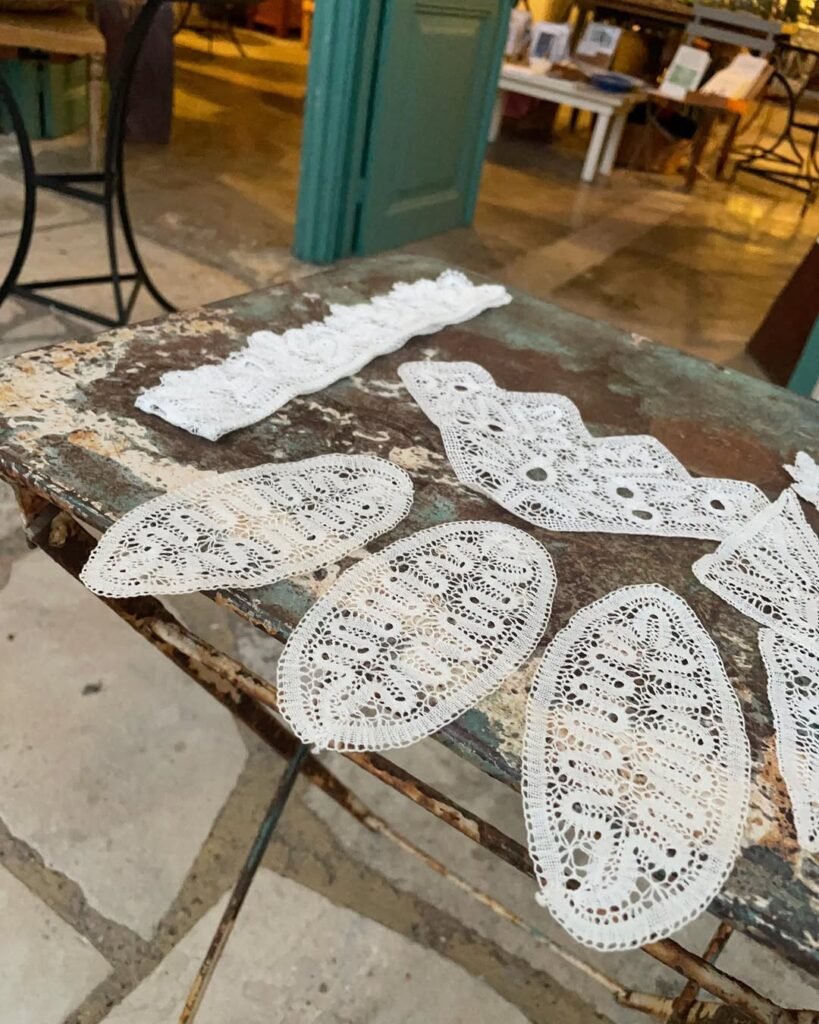
Where to Experience It:
- Folklore Museum of Gavalochori: Marvel at the impressive collection of kopaneli pieces, including the famous seamless wedding dress and traditional lace-making tools
- Holy Monastery of Korakies: Discover the monastery near Chania where nuns played a crucial role in spreading this craft throughout Crete
- Gavaladon Square in Gavalochori: View the plaque commemorating the village’s lace-making tradition and its cultural significance
- Women’s Cooperative in Gavalochori: Purchase authentic kopaneli pieces directly from local artisans who are preserving this delicate heritage
5. Crafting the Iconic Cretan Knife
Throughout Crete’s storied history, few crafts have captured the island’s spirit of honor and artistry quite like the legendary Cretan knife. You’ll find these masterpieces aren’t just tools – they’re symbols of friendship, protection, and cultural heritage, dating back to the Minoan civilization.
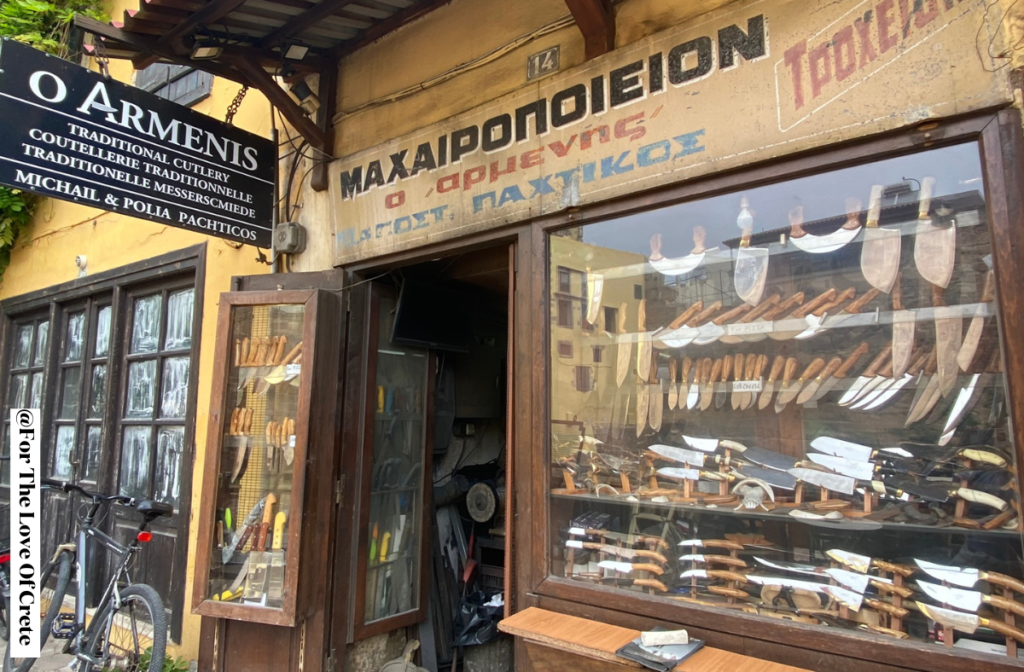
Historically, these knives were so essential that towns like Chania and Heraklion had entire districts called machairadika, dedicated exclusively to knife-making and selling. The tradition combines influences from various cultures that have shaped Crete over the centuries.
When you’re exploring workshops in Chania or Heraklion, you’ll discover why these knives are so special:
- Each blade features a distinctive upward curve, reminiscent of traditional Greek tsarouchi shoes
- Handles showcase intricate carvings in olive wood, bone, or buffalo horn
- Many blades carry mantinades – poetic couplets in the Cretan dialect expressing love or wisdom
In Venetian and Ottoman times, they represented social status and honor, carried by men as a sign of readiness to defend their family and homeland. A knife gifted to a loved one often carried deeply personal messages, emphasizing its sentimental value.
While many imitations flood the market, genuine pieces are crafted with high-quality materials and feature intricate engravings that may be difficult to interpret even for native Greek speakers due to the unique Cretan dialect and cultural allusions.
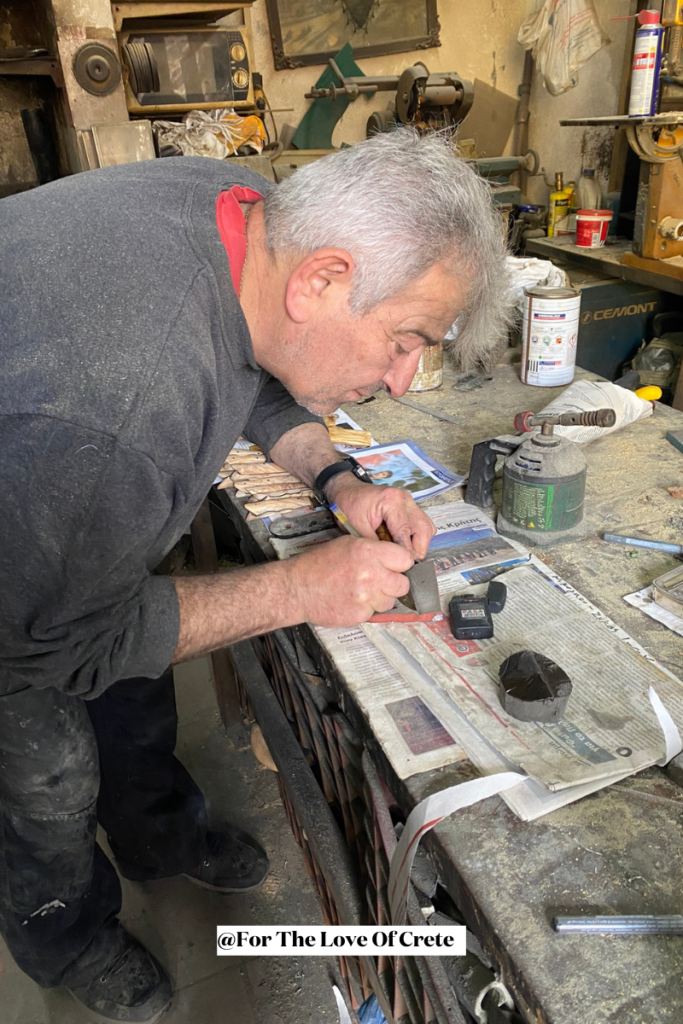
Where to Experience It:
- Sifaka Street (Machairadika) in Chania: Explore this historic knife district in the Old Town where traditional craftsmen continue centuries-old techniques
- Renowned Workshops in Chania: Visit master craftsmen like O Armenis, Stavros Paterakis, Eftychis Sartzatakis, or the Palamianakis family to witness authentic knife-making
- BIO.PA. Anopolis in Heraklion: Discover the workshop of Ioannis Klinis and family, specialists in handmade traditional knives
- Historical Museum of Crete: See an extensive collection of antique pieces illustrating the evolution of Cretan knives through the centuries
6. Basket Weaving With Local Materials
From the sharp precision of Cretan knives, we turn to the gentle art of weaving nature’s bounty into practical beauty. You’ll find this 4,000-year-old tradition alive in villages like Mixorouma and Nivritos, where skilled artisans transform humble reeds, wicker, and willow stems into sturdy baskets that serve both practical and decorative purposes.
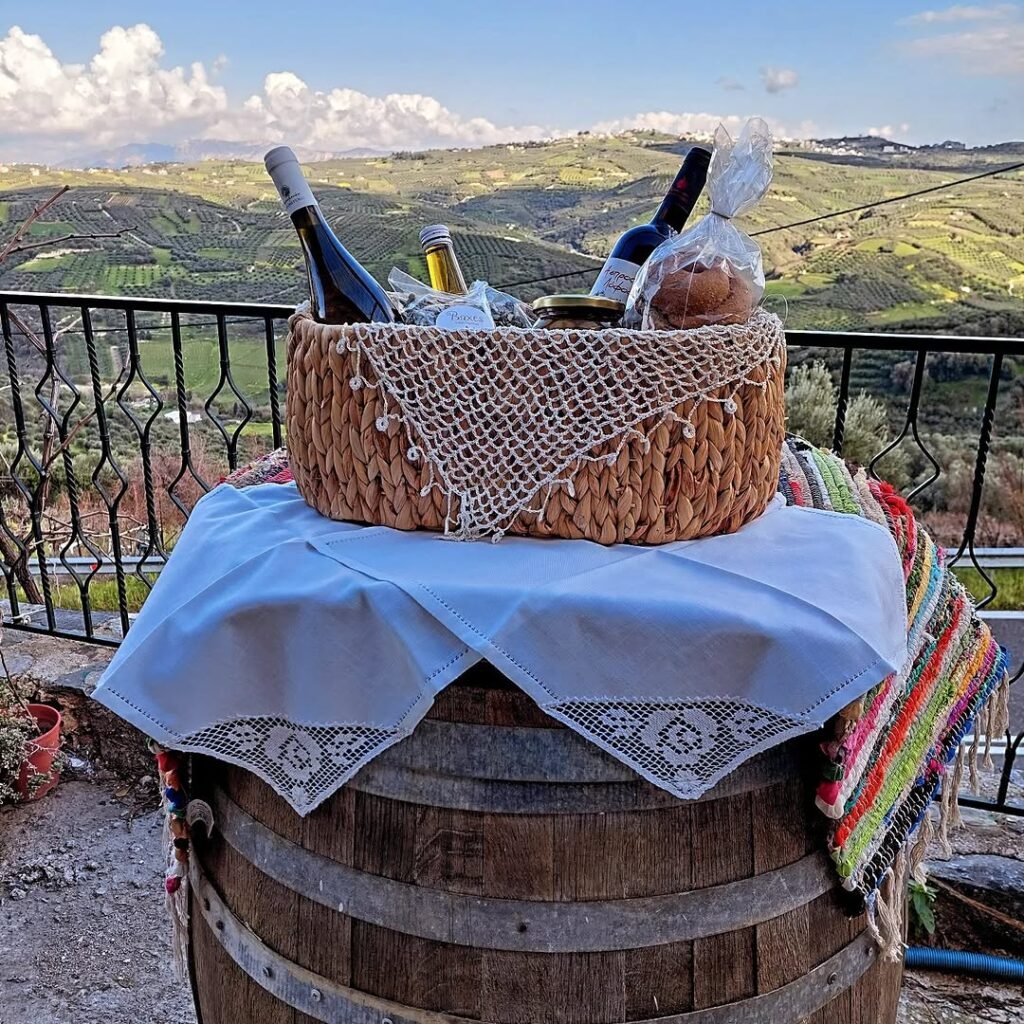
The craft evolved naturally in rural and pastoral communities, where baskets were essential for agricultural tasks like transporting olives, grapes, and grains. What began as a utilitarian necessity evolved into an art form with deep symbolic meaning.
If you’re lucky enough to visit a local workshop, you’ll witness how these craftspeople work without tools, using only their experienced hands to twist and weave materials that have been carefully dried under the Cretan sun and soaked for flexibility.
In ancient Crete, baskets weren’t just utilitarian objects but artistic vessels used in rituals, carrying offerings during religious ceremonies. This artistic legacy persisted in frescoes and pottery designs that celebrated the craft’s aesthetic and cultural value throughout the centuries.
Today, basket weaving is experiencing a revival through workshops in villages like Gonies and Mixorouma. From beekeepers’ traditional straw hives to olive-leaf-lined baskets for smoking fish or ripening cheese, each piece tells a story of ingenuity passed down through generations.
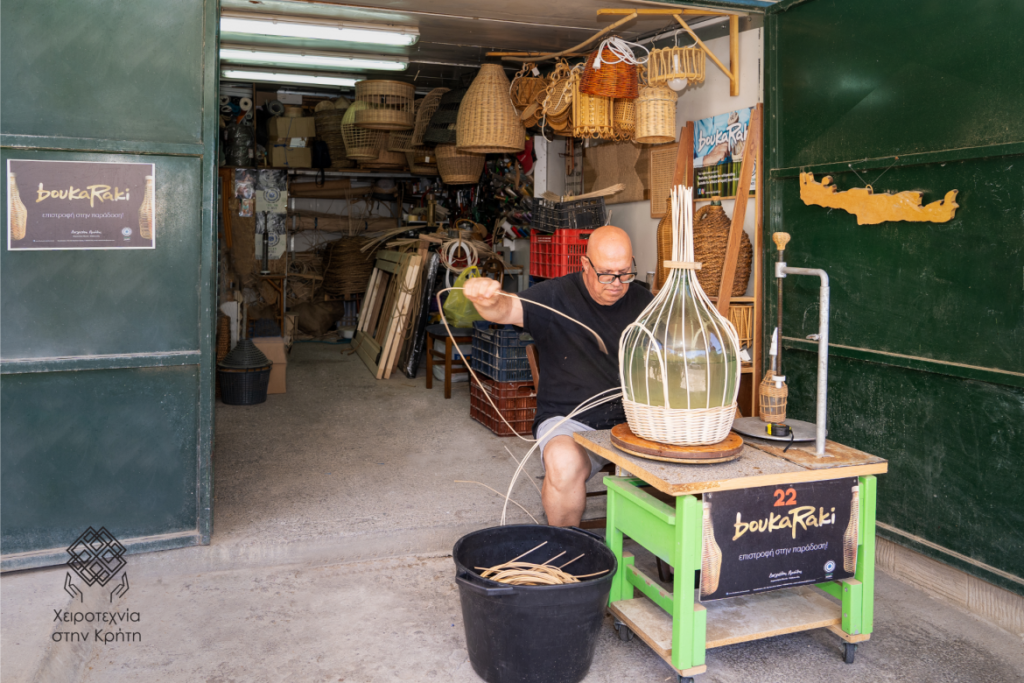
Where to Experience It:
- Mixorouma near Spili: Watch local artisans craft baskets using reed, wicker, and lentisks using traditional techniques
- Nivritos near Zaros: Discover the art of kanistroplektiki (pannier crafting), creating durable baskets for agricultural use
- Gonies in Malevizi: Visit workshops where practical and decorative items are produced using time-honored methods
- Amnisiades Park in Heraklion: Participate in hands-on workshops to learn Minoan basket weaving and create your own small ornament
- Cretan Folk Art Center in Rethymno: Observe master weavers at this “living museum” showcasing traditional crafts
7. Olive Wood Carving Techniques
The ancient art of olive wood carving stands as a memorial to Cretan ingenuity and resourcefulness. This tradition reflects the island’s 4,000-year relationship with its precious olive trees. You’ll find that local artisans carefully select wood from pruned branches or non-fruit-bearing trees, then patiently air-dry it for up to three years before the magic begins. It’s amazing how they transform this humble material into beautiful, lasting pieces that’ll grace your home for generations.
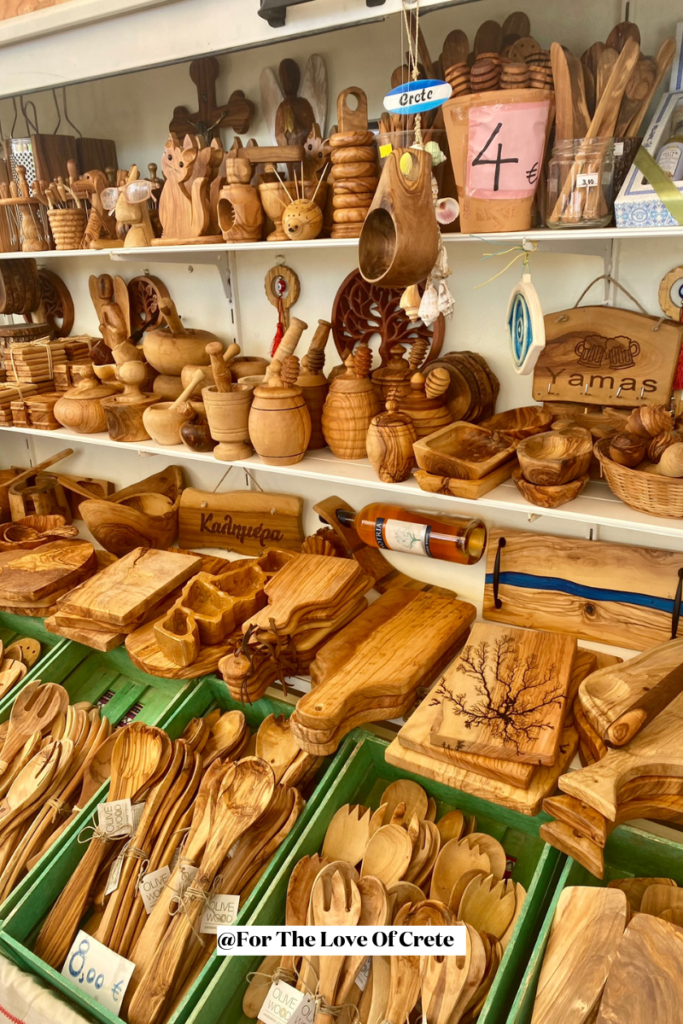
The olive tree itself holds profound cultural significance as a symbol of peace, prosperity, and immortality in Greek culture. Look no further than the ancient olive tree of Vouves in Crete—estimated to be 3,000-5,000 years old—whose branches were even used to create wreaths for Olympic champions.
When you’re exploring Cretan workshops, you’ll notice these distinctive characteristics:
- Intricate grain patterns that tell stories of centuries-old trees, with swirls making each piece unique
- Natural oils and waxes that create a warm, inviting finish
- Custom-made pieces that blend functionality with artistry
Authentic craftspeople use eco-friendly methods, typically working with pruned branches or wood from non-fruit-bearing trees, ensuring the craft doesn’t harm living trees. Beyond the popular kitchen items, artisans create everything from intricate chessboards to religious icons and sculptures. The wood’s natural durability makes these pieces both functional and long-lasting.
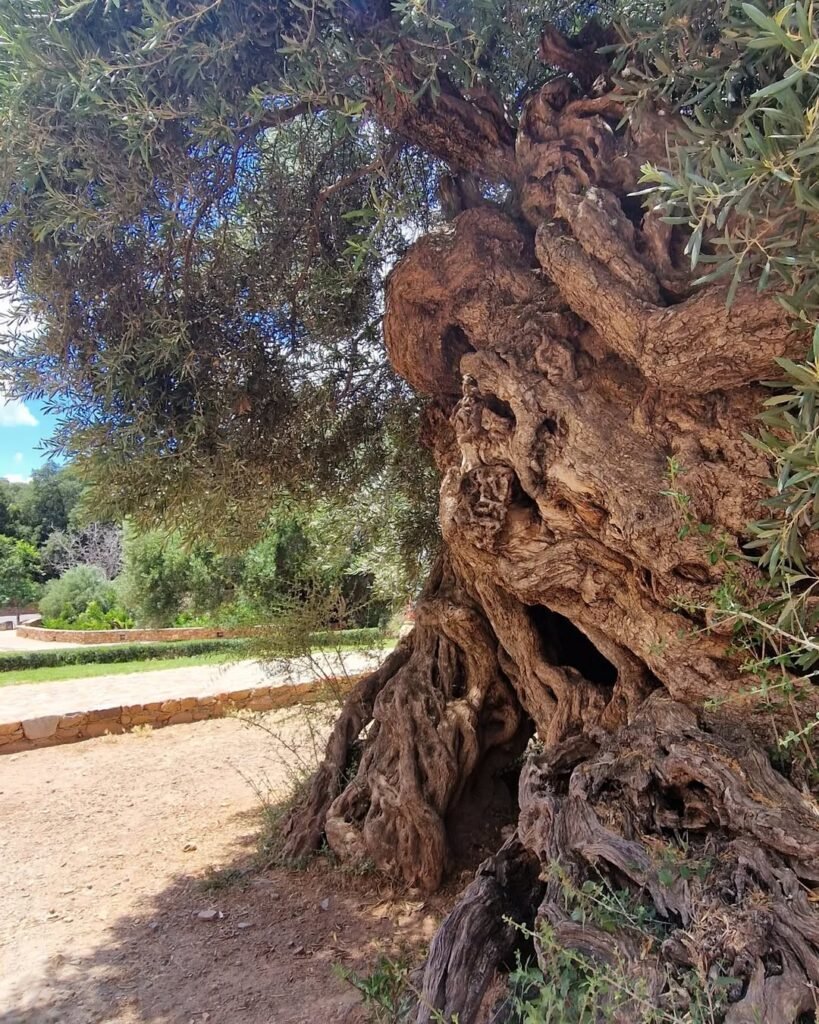
Where to Experience It:
- Olive Wood Traditional Workshop in Adele, Rethymno: Watch artisans use old-school machinery and browse their exhibition of handmade kitchenware and home decor
- Art on Olive Wood in Agios Nikolaos: Discover a highly rated artisan shop offering decorative, usable, and collectible handmade items
- Nikos Siragas Woodturning Courses in Rethymno: Take hands-on classes suitable for beginners and create your own olive wood piece
- Cretan Olive Wood Products: Find sustainable, handmade creations emphasizing traditional craftsmanship with modern appeal
- Galini Byzantine Woodcut Workshop: Experience related techniques in a scenic retreat setting in Southeast Crete
8. The Ancient Art of Cretan Ceramics
Ancient glazed ceramics bring Crete’s rich artistic legacy to life, blending Byzantine elegance with Venetian flair in ways you’ll find mesmerizing. When exploring traditional crafts in Crete, you’ll discover that pottery villages like Margarites or Thrapsano preserve techniques that haven’t changed much in a millennium.
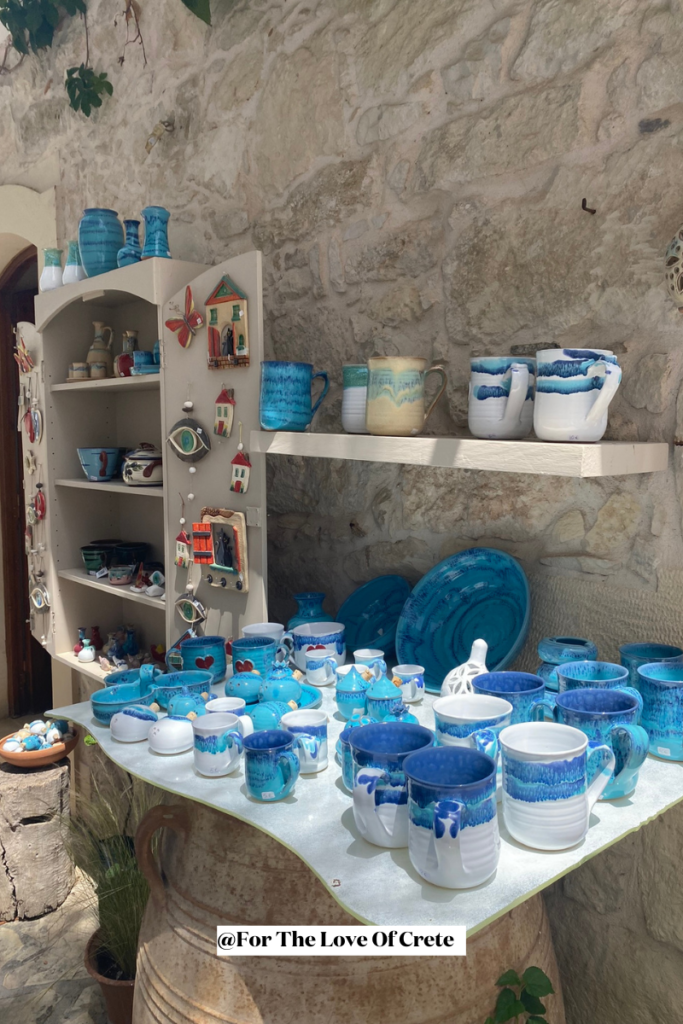
The art of glazing ceramics on the island dates back to the Byzantine period (10th-12th century CE), when imported techniques introduced glass-like finishes to seal and decorate pottery. During the Venetian period (1212-1669), Crete became a center for maiolica production—a type of tin-glazed pottery featuring intricate patterns and vibrant colors inspired by Italian Renaissance designs.
You’ll be fascinated by how local craftspeople apply finely ground glass powder to create those distinctive smooth, glass-like finishes. The revolutionary tin-glazing technique introduced during Venetian rule allowed potters to create opaque white surfaces that served as a canvas for detailed artwork. These pieces weren’t just beautiful—they were technological innovations that could store liquids without leaking, a significant advancement over earlier porous earthenware.
Traditional potters achieved unique effects by controlling the firing process of their kilns through oxidation and reduction processes, creating distinctive colors and finishes that continue to influence modern ceramics.
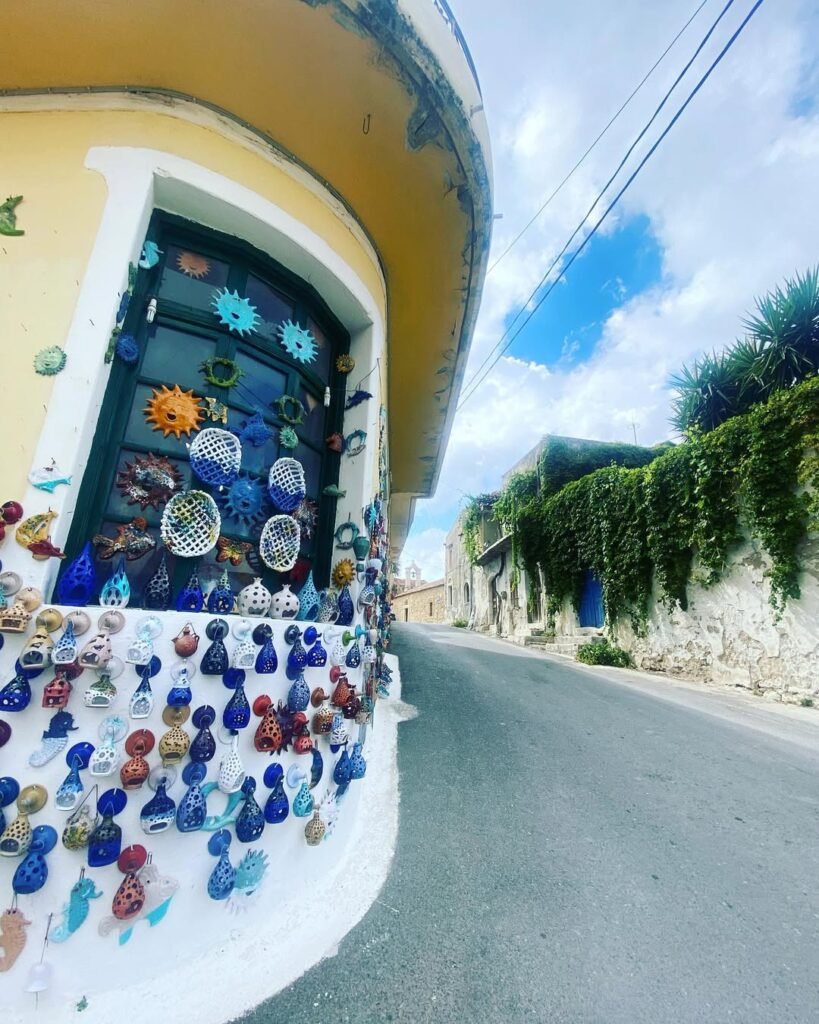
Where to Experience It:
- Margarites Village in Rethymno: Explore over 15 pottery workshops, watch artisans create Minoan-inspired designs, and try your hand at pottery-making
- Thrapsano Village in Heraklion: Visit “The Village of Potters” where workshops like Minoan Pottery use traditional wood-fired kilns to create authentic ceramics
- Manousos Chalkiadakis Studio in Paidochori, Chania: Watch a master craftsman at work and participate in workshops to create your own ceramic art
- Cretan Olive Oil Farm in Agios Nikolaos: Take pottery lessons in a serene setting surrounded by olive trees
- Historical Museum of Crete in Heraklion: View ancient Minoan pottery alongside modern interpretations to understand the craft’s evolution
9. Musical Instruments: Crafting Melodies
Crafting melodic instruments in Crete requires patience, precision, and centuries-old expertise that you’ll find fascinating to explore. From the iconic three-stringed lyra to the haunting askomantoura bagpipes, these instruments tell stories of the island’s rich musical heritage dating back to Byzantine times.
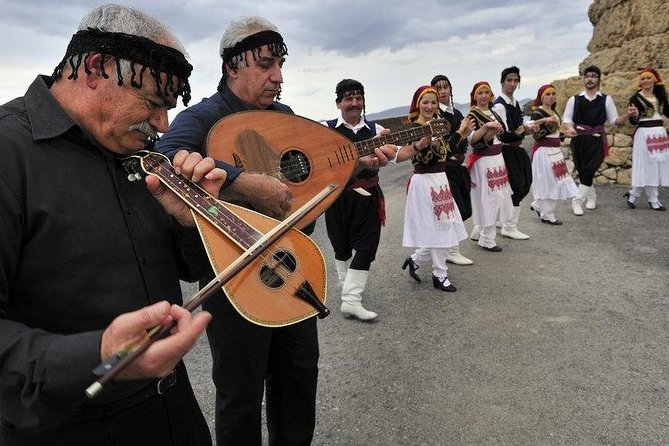
The Cretan lyra, a pear-shaped three-stringed instrument, stands as the most enduring symbol of traditional crafts in Crete since the 10th century AD. Its body is carved from aged walnut or mulberry, while the soundboard often uses rare cedar wood that can be up to 300 years old. The distinctive sound of the lyra is considered the true “voice” of Cretan music, with its haunting melodies deeply connected to the island’s cultural identity.
The askomantoura, a type of bagpipe made from goatskin and wooden tubes, has been used since the 15th century and evolved from ancient Greek wind instruments. Meanwhile, the laouto (Cretan lute) introduced during the Venetian period differs from mainland versions with its larger body and lower tuning, primarily providing rhythmic accompaniment for traditional dances like Pentozali and Syrtos.
You’ll discover skilled artisans in workshops across Rethymno and Chania, where they’re keeping these ancient traditions alive while adapting to modern demands. Each instrument is meticulously shaped and tuned by hand, with some lyra bows still featuring small bells (gerakokoudouna) for added rhythm during performances.
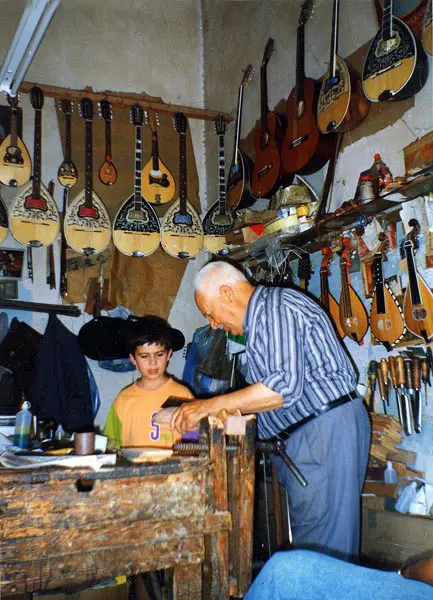
Where to Experience It:
- Stagakis Cretan Lyra Workshop in Rethymno: Visit this renowned workshop operating since 1945, where you can observe the lyra-making process and learn about the family that helped modernize the instrument
- Nikos Papalexakis Workshop near Old Town Rethymno: Explore a studio specializing in handmade lyras crafted from local rosewood and cedar
- Antonis Stefanakis Workshop in Zaros: Meet a master craftsman who creates lyras, laoutos, and other folk instruments using traditional techniques
- Museum of Traditional Music Instruments Thirathen in Heraklion: Discover a rich collection of instruments with guided tours and recordings
- Local Village Festivals (Panigiria): Experience these instruments in their cultural context, accompanying traditional Cretan dances and celebrations
Conclusion
As you explore Crete’s rich artistic heritage, you’ll discover that these nine traditional crafts aren’t just tourist attractions – they’re living connections to the island’s soul. Whether you’re watching skilled potters shape ancient clay, admiring intricate kopaneli lace, or holding a hand-carved olive wood bowl, you’re experiencing centuries of Cretan culture that has survived despite modernization.
Do not rush your exploration of these crafts. Take time to visit local workshops and support these artisans who keep these timeless traditions alive. Each handcrafted piece you bring home carries a fragment of Crete’s living heritage—a story of resilience, creativity, and an unbreakable bond with the land that continues long after your journey ends.
Further reading:
Crete as a Second Home: What Makes This Greek Island Irresistible
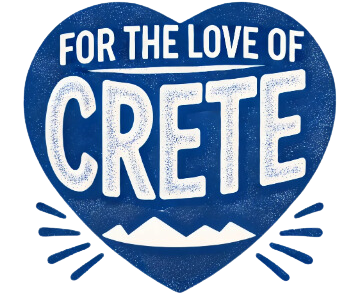
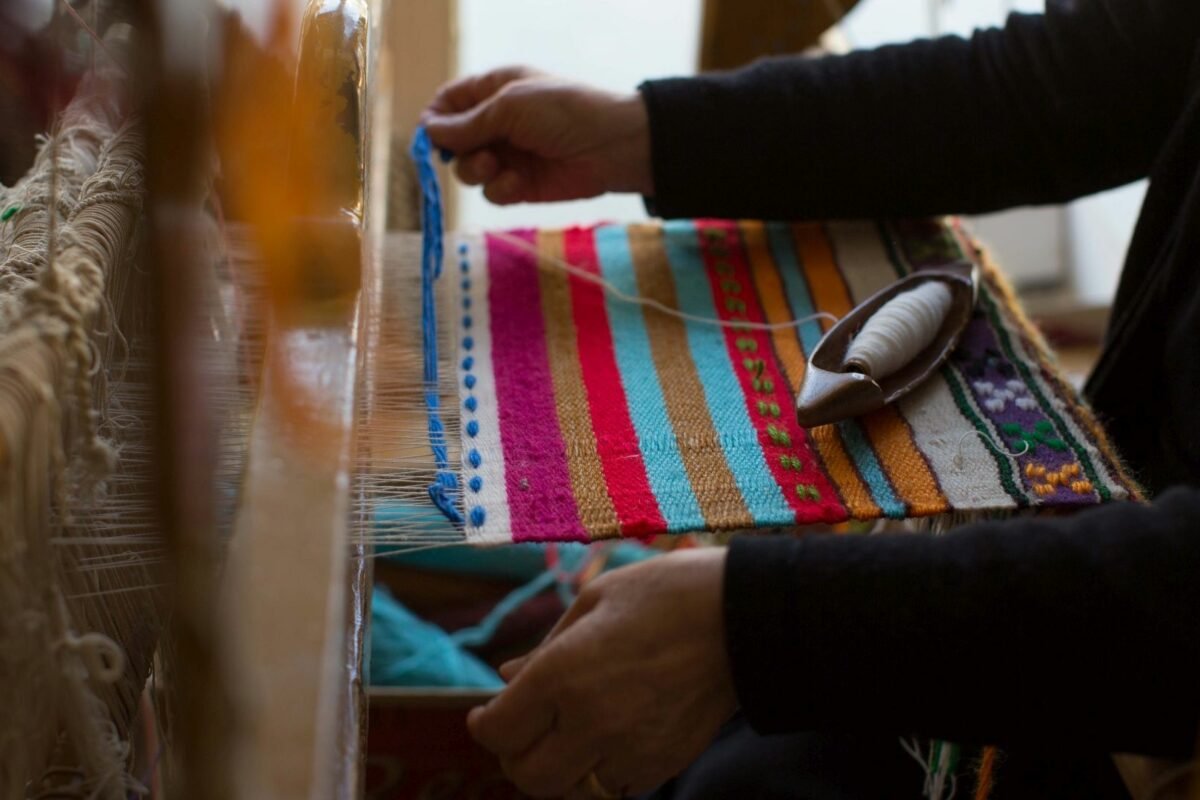
Hi Bella,
This is a bit of a strange one… I’m not sure if you can help me. My parents visited Crete last year and brought me back a beautiful ceramic mug. It was big, white with blue streaks, and a red heart in the middle. I loved it so dearly. My dad poured boiling water in it recently and it shattered. I just noticed the same ones in a photo in your blog post 9 Local Crafts in Crete That Showcase Its Artistic Heritage (And Where to Experience Them), right below number 8. about Cretan ceramics. I was wondering if you at all remember what shop that may be?
I apologise, I appreciate that this is an odd request.
Best regards,
Hanna
Hey Hanna,
Not a strange request at all! I’m pretty sure that’s the Ceramic & Glass Workshop, right next to Giannousakis Taverna in Margarites. I’ve sent you an email with more details, including a Google Maps link and some photos from reviews that might help your parents confirm it’s the right shop.
I hope you manage to track down a replacement! 💙
Με πολλή αγάπη,
Bella